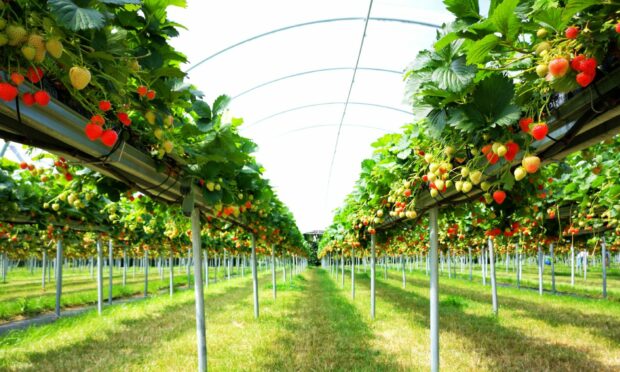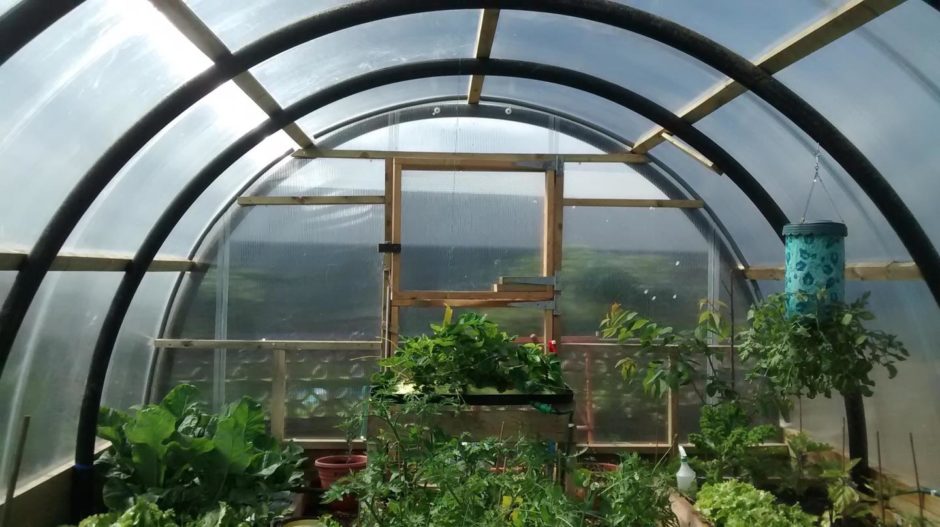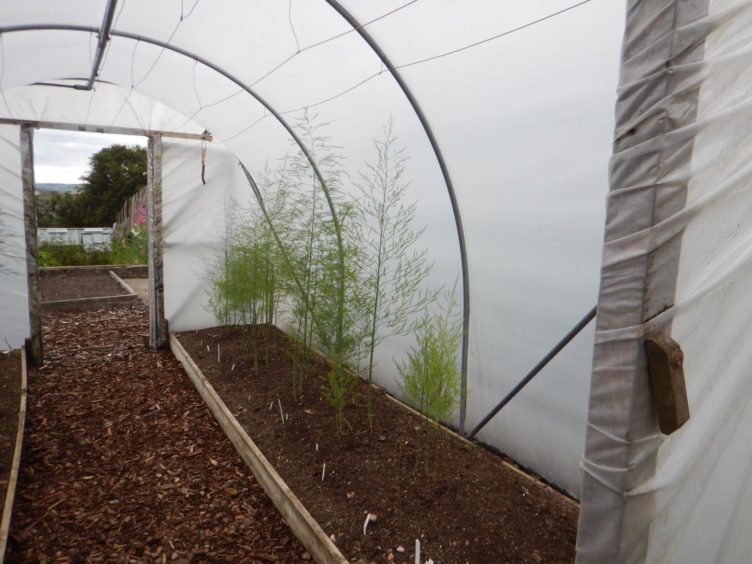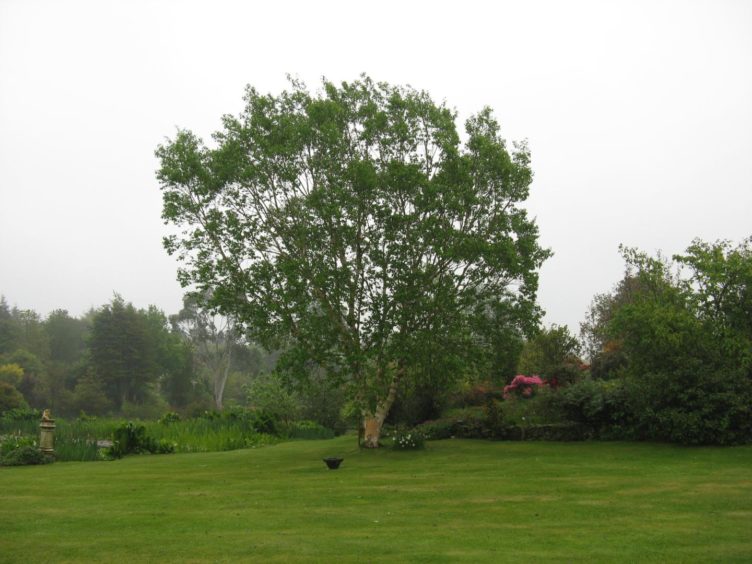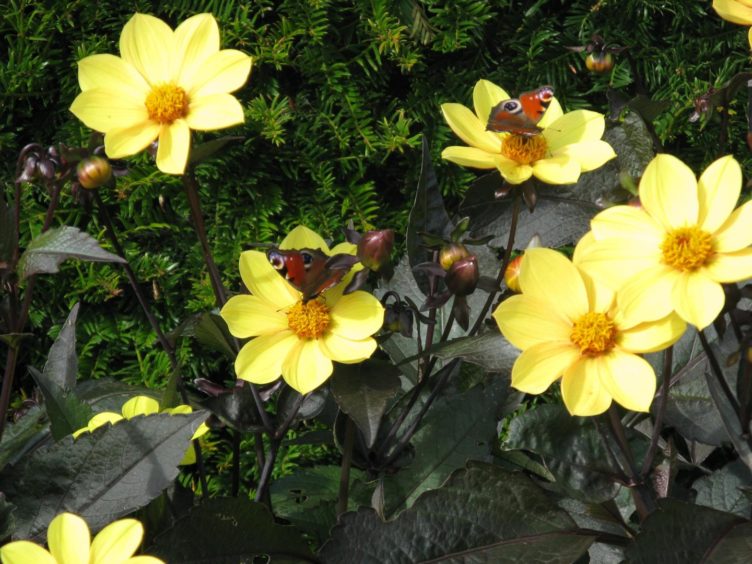Among the requests and comments from newcomers to gardening comes the notion from some of having a greenhouse or equivalent. What’s it to be?
That question could take quite a while to answer, with cost likely to be the limiting factor. The top of the scale (only a dream for most of us) being a glasshouse with an internal division to be able to run two different environments, one heated the other unheated, and fitted with automatic ventilation. With that degree of sophistication, you can go off to work or away for the day knowing that your plants and crops will be growing safely as intended.
I remember doing a review on this topic a few years back when polytunnels appeared and started to become popular, because they would undoubtedly come at the bottom of the scale where cost is a major consideration. Things have moved on since then, especially with the introduction of a “new” tunnel.
What is a Polycrub?
This latest development has been available now for a few years, indeed George Anderson and I had the privilege of inspecting one of the first to be constructed in a private garden on a visit to Orkney.
The new product I’m talking about is known as the Polycrub. At a glance it might be mistaken as just another polytunnel, but that would be in outline shape only. The crucial part of this story is that the new tunnel was constructed to be able to withstand the howling gales of the Outer Isles, Orkney and Shetland.
Not surprisingly perhaps, the key component in the construction came from the fishing industry. The principal hoops were saved from the main frameworks of the circular salmon farming cages we see in many west coast bays. One such metal structure was halved to become the semi-circular gables of the tunnel, strong enough to withstand gales wherever they are constructed, whether it be the islands as mentioned or on exposed upland farms and crofts where they are being used as sheep sheds – especially at lambing time – and chicken sheds. The covering materials will vary according to need, of course.
I venture to suggest that they are significantly more expensive than the original polytunnels which consist of a few metal tube hoops covered with a sheet of polythene stretched over the structure, the edges secured simply by burying them in the ground. These simple structures would not last for five minutes in a Shetland gale. (No prizes for anyone who proves me wrong).
The simple polytunnel provides a protected environment enabling us to extend the growing season for vegetable crops and indeed may widen the range of what can be grown in our area simply because of the weather protection.
Polytunnel trials
I started experimenting with polytunnels in the mid-’70s at Craibstone when employed by the Agricultural College. These trials were on behalf of market gardeners in our area for them to be able to extend the growing season, at either end, so enabling them to compete with growers of fresh vegetables from further south.
The biggest problem to overcome is in controlling the environment in the tunnel. Just think of it this way. The polythene cover has to be entire (no holes), tightly secured to prevent flapping, otherwise it will soon be damaged. Even the access door has to fit tightly, and what you end up with is a sealed box.
The temperature rising by the minute with every blink of sunshine and no air movement inside means the temperature shoots up, and with little or no moisture in the air either, any plant material inside will simply shrivel up and die.
Over the years, I’ve seen many ingenious solutions to this problem – holes the size of pot lids cut at intervals along the side with a roll-down blind fitted along the full length to close up as and when necessary (if you happen to be there at the crucial times).
Gardeners and allotmenteers are imaginative and inventive people and some may well have solved this problem to their own satisfaction, but if I take you back all these years to our trials I can advise that the simplest ventilation system relates to the door – the only moveable part of these basic structures.
Think stable door – the top half opens. While they are hinged up the side, why not hinge across the middle or three-quarters way up like any ventilator window, usually above a door, then cover with netting to keep birds out. That can be left open all the time.
Needless to say, the polytunnel should be located with the door on the lee-side of the structure.
Combating hayfever
A week or so back, I made mention of a way to avoid midge attacks whether you are simply out walking or trying to enjoy a bit of peace and quiet in the garden, now we are well into the hayfever season, when some of you may be wishing for a cure or preventative for that scourge.
Did you know that many of our native and ornamental trees are either male or female? Further, did you know that most of the trees selected to adorn our streets are male? Why? Because they are not the ones that produce fruits which drop on pavements causing a mess and accidents by people slipping.
BUT, to get to my point, the male trees are the ones which produce POLLEN, one of the causes of hayfever.
Trees are not the only ones to blame. There are three groups of culprits – the trees will be the main source of the problem from February to June, but grasses continue the irritation from May to July, joined by some field crops, weeds and herbaceous plants from June to September.
Here are some of the culprits:
Trees – oak and birch
Crops – oilseed rape
Weeds and garden – nettles, dockens, ragweed
Garden plants – sunflower, chrysanthemums, some dahlias
